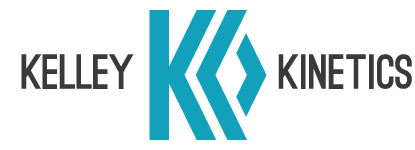We sat down with Coach Kim to talk about her background in training, and why injury prevention is such a big part of her philosophy.
Q: Your education started out with athletic training. Did you always know that you wanted to focus on injury prevention? When did this become a central topic in your program?
A: I originally went back to school for Health and Wellness. It wasn’t until a professor in the program came to talk to us about Athletic Training that I even realized this was an option! After enrolling in the program and being involved with the different sport teams I realized the amount of overuse injuries most athletes had. I even observed this with my own children as they participated in sports. I was tired of treating the symptoms and started focusing on why they were happening.
Q: When we hear you talk about biomechanics and corrective exercises, you’ve clearly got a wealth of knowledge for this realm. What drew you to this with such passion?
A: I was in awe of the way the body moved and could identify when something wasn’t right. I would look through my anatomy books and use classmates to manipulate movements to see what needed to be corrected or changed to achieve the desired movement patterns. I was lucky to have some great athletic trainers to work under that would challenge me to find the answers. I became passionate about finding the right exercises to help the athletes I was working with achieve their goals. I was fortunate to get into a Master’s program that focused on injury prevention by incorporating corrective exercises through National Academy of Sports Medicine (NASM).
In this field, we start by working through the phases of inhibition (or quieting the overactive muscles through myofascial release – foam rolling), which lengthens the muscle to create the functional range of motion. Then, we focus on the weaknesses to provide proper activation of a muscle that has not been doing its job, for balanced and powerful bodies. This is just so fascinating, not to mention important, for anyone that is active!
This is what keeps my mind racing at night. The science behind the methods of corrective exercises just makes sense. You wouldn’t replace a damaged floor without fixing the leaky faucet would you? I love just watching people be active and recognize over/under active muscle and helping them implement the correct exercises to reeducate movement patterns.
Q: Most coaches tout their programs or performance at the core of their offerings. Why is injury prevention so key?
A: Reducing the risk of injury throughout the training keeps the athlete on track and able to progress without missing too much training. Addressing biomechanics from the beginning of a training plan allows for the athlete to build a strong foundation, to handle the stress of the increasing training load as the distances get longer and the workouts get harder. When the athlete follows their corrective exercise program that is incorporated into their training, it reinforces efficient movement patterns and prepares them for the start line.
Too many athletes probably have experience with injuries derailing their training, and therefore their goals for the season. Preventing injuries from the beginning makes so much more sense than having to address them after they happen. I always tell people that in order to reach their finish line goals, they have to get to the starting line healthy, strong, and prepared.
Q: Corrective exercises are an integral part of every program for every body. How are these different than the standard strength routines that people do?
A: Basic group training, boot camps or internet exercise programs have everyone follow the same traditional exercises, however not everyone’s body is the same. Training in this generalized manner is just reinforcing the body’s muscles to work against each other. Corrective exercises focus on addressing muscle imbalances to reeducate proper movement patterns. A functional movement assessment will identify the overactive and under-active muscles so exercises can be tailored for your body. This will help produce quality movements making you a more efficient athlete and decreasing your risk of injury.
Q: What is one piece of advice you wish every athlete would know when it comes to injury prevention?
A: Listen to your body! It’s so important to keep up communication with your coach on how you are responding to the training program. Let them know if something doesn’t feel right or if you are missing major training days so that your plan can be adjusted.
Also, this is integral, and a little goes a long way! Addressing over/under active muscles for a few minutes each day will help get you to the start line injury free, therefore increasing your chances of reaching your race goals!
